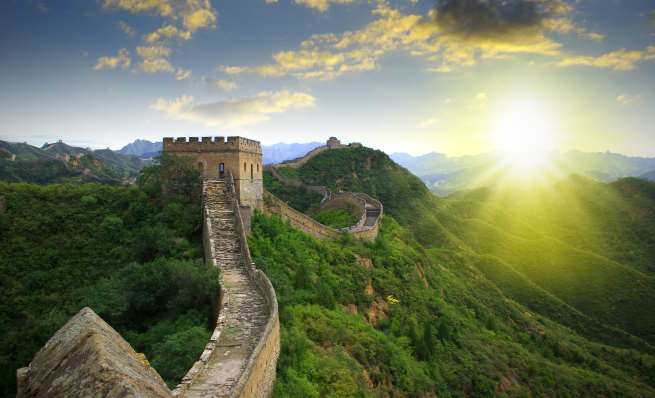
Should Australian investors be worried about a slowing China: With the ASX200 index falling 9.2% from the August 21st high (as at Monday 13th October), the stock market is on the verge of a technical “Crash”. In fact, year to date the ASX200 is down 3.7%. And without buyers returning, 2014 could be poised to be the first down year since 2011, which recorded a 14.8% decline.
So what is it that has investors so worried that new medium-term lows have been struck. And the magical 10% correction level is just around the corner?
Chinese Influence
Most of the ASX200 decline is hinged around a potential end to the commodities boom. Which is directly influenced by China. As our biggest trade partner, and having had an insatiable need for natural resources for the last decade. Our relationship with China has fuelled a boom that started even before the Global Financial Crisis (GFC) of 2007/08.
As the following image portrays. The annual GDP growth rate for China peaked at 13%* in 2007. On a global level. This is a phenomenal expansion which was accentuated by a property boom and social expansion.

Recent data shows that China’s annual GDP growth rate is sitting at 7.5%*. This might seem like a poultry figure in comparison to its heyday of 2007. But in comparison to other leading developed nations. This is still exceptionally strong. The United States is reporting a current annual GDP growth rate at 2.6%*, with its largest recorded figure of 13.4%* in the early 1950’s. And comparing to the efficiency of the German economy. Their current annual GDP growth rate is a mere 0.8%* having peaked at 5.2%* in 2011.
*all data sourced from tradingeconomics.com
In more recent years
Through 2013 and 2014, the Chinese economy has certainly stagnated. Inflation figures released on Wednesday show that the Consumer Price Index (CPI) has slowed again. Negating any need for their central bank to raise Interest Rates.
But do you think the Chinese government would let their economy slip further backwards in growth, or allow the economy to stagnate so much as to slip into a Recession?
While there is potential for the stock market to continue sliding. The influences are more than just China. Commodity prices have also been declining on a rising US dollar. A stagnating Eurozone, and uncertainty over the Russia/Ukraine political situation. Therefore, the current stock market decline, whilst including a large influence from declining demand for resources from China, has an additional influence from other sectors around the world.
Investors BE-AWARE!
Investors need to be aware of the impact of the Chinese economic slowdown. And should we continue to see a decline in the annual GDP growth rate. Be aware of what management approach should be adopted for investment portfolios.
Merely sticking your head in the sand and using the “Hope and Pray” method in holding stocks long-term is not the most effective method of managing your share portfolio. There are strategies your adviser can discuss where you apply derivative positions against your portfolio (or individual stocks). Adopt a Bearish position on the markets, or even decrease your exposure. Should you be concerned that the markets could continue in the current decline. I recommend you discuss what alternatives you have with your financial adviser, or contact us directly.
But as the ‘perfect storm’ of events unfolds with Europe and declining commodity prices, the potential for further downwards pressure in the stock market is clearly evident. The further lower the ASX200 declines however, the more value we view in certain sectors of the Australian stock market. Resources might not be one of those, but bargains will be had once global geopolitical concerns start to ease.
To find out more, click here!
